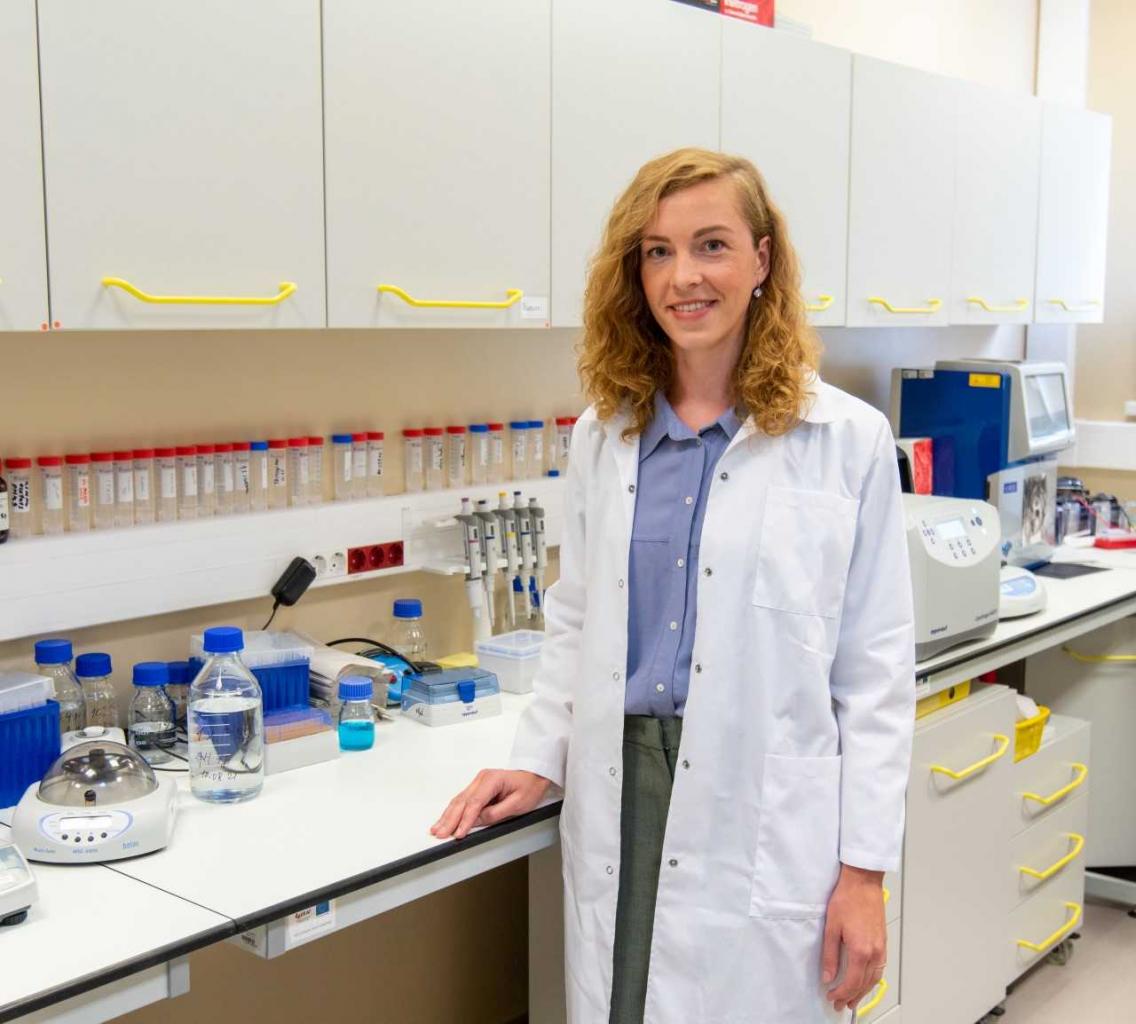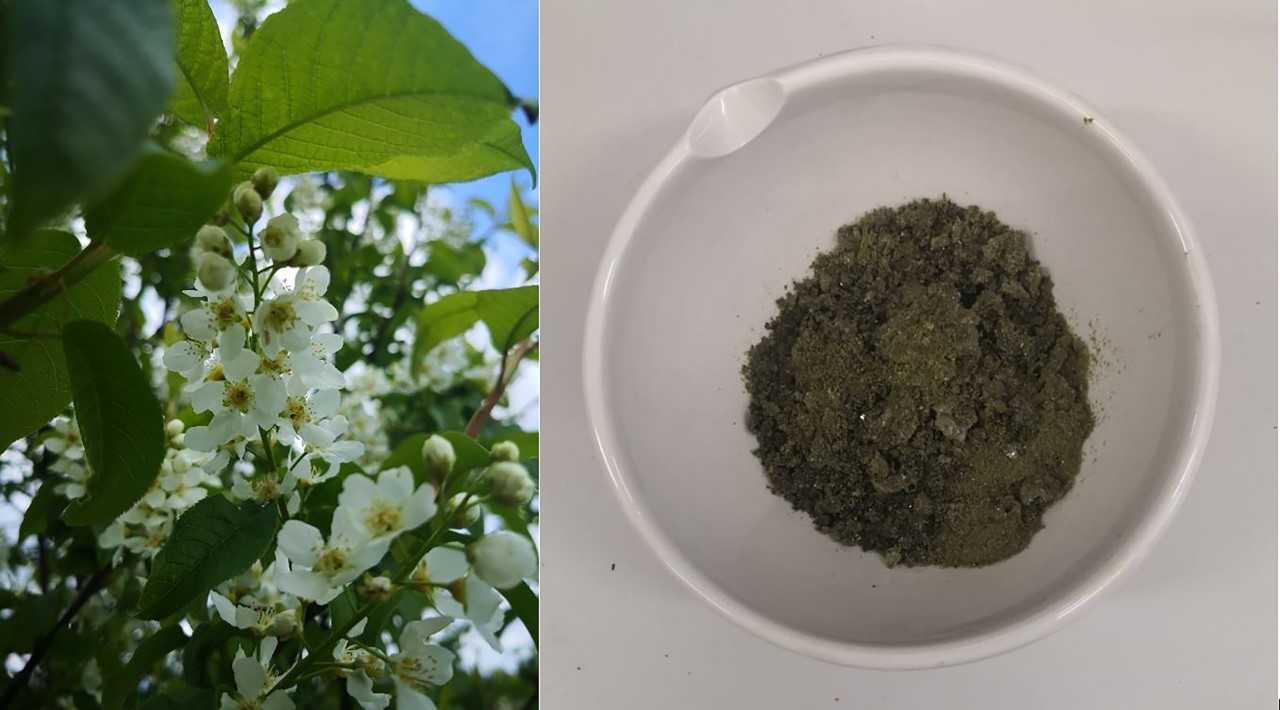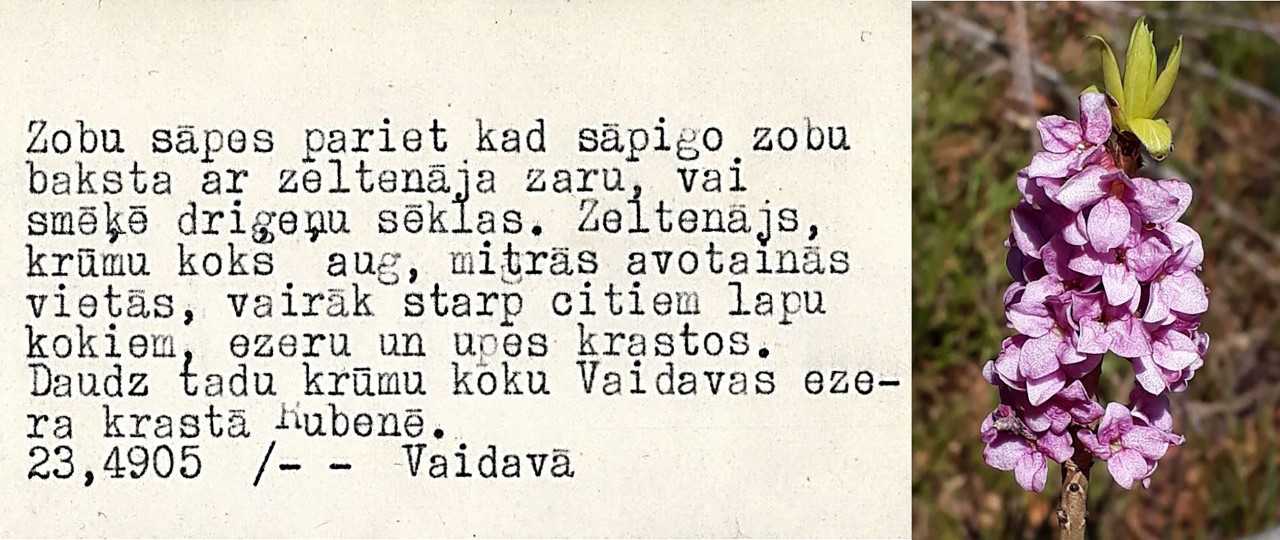First Latvian Ethnobotanical Study: Doctoral Student Explores Medicinal Plants in Latvian Folk Beliefs
Inga Sīle’s doctoral thesis, Medicinal Plants in the Records of Latvian Folk Medicine and Analysis of Their Practical Applications, compiles the medicinal plants mentioned in Latvian folklore and has taken five years to complete. During this time, 40,000 Latvian folk beliefs, or medical records, have been studied. Of these, more than 1,900 have been selected to form the base of the thesis. These records have allowed Sīle to identify and describe 211 medicinal plants and the scientific substantiation of the therapeutic effect of 59 plants has been found in European Union herbal monographs. These are just a few figures and facts that describe Rīga Stradiņš University (RSU) student Inga Sīle’s doctoral thesis.
 Inga Sīle in the laboratory.
Inga Sīle in the laboratory.
‘It is a very modern thesis that understands our historical roots. The materials hide rational grains that can be used in science and Inga has managed to find them among thousands of folk beliefs,’ explains Dr. pharm. Maija Dambrova,
one of the supervisors of Sīle’s doctoral thesis, Professor at the RSU Department of Pharmaceutical Chemistry and Head of Laboratory of Pharmaceutical Pharmacology of the Latvian Institute of Organic Synthesis.
‘With this interdisciplinary research project, we are putting Latvia on the map in the field of ethnobotany. We are the first in Latvia to gather information from folklore materials and make them available internationally.
The database of medicinal plants that Sīle is creating, as well as the experiments with bird cherry tree and pelargonium extracts that she has performed can serve as a basis for more research both in here in Latvia as well as internationally. The material she has found can be useful to develop new products, such as herbal medicines, food supplements or cosmetics.’
How did the idea of studying plants in folk beliefs come about?
Prof. Maija Dambrova has long been interested in the topic of medicinal plants in folklore. ‘Looking through books of Latvian folk beliefs, I realised that they mentioned many medicinal plants, but I couldn’t find any research on their healing properties. There are several stories within pharmaceutical science about developing new drugs based on folklore – the most popular of which is how artemisinin is used on malaria. I wondered whether this was the case in Latvia as well. I was determined to look through all the volumes of Latvian folk beliefs and explore this issue when I had more time. I told my colleagues and students at RSU about my idea until I met Inga Sīle, a young and energetic researcher who showed an interest in this topic too, and soon we started working tother with a lot of energy.’
Sīle has been interested in medicinal plants since she was a child, so after she obtained a degree in pharmacy, she taught a course at RSU on plant and animal biology, all the while working in a pharmacy. The logical next step was to study medicinal plants on a doctoral level.
Results that provide the basis for future research
‘The amount of work was a big challenge – I reviewed 40,000 beliefs from books by folklore researcher Pēteris Šmits and from the Archives of Latvian Folklore. Various plants were mentioned in over 1,900 beliefs. I organised each belief into a table, entered the Latvian and Latin names of all 211 plants mentioned there, as well as the parts of the plant that were used, their indications and compared this information with modern knowledge in European Union herbal monographs,’ exlains Sīle.
‘At first it seemed like it would be easy: I would take a belief and just write everything down, but then it turned out that “pelašķis” (yarrow in Latvian – ed.), for example, could also hide under the names “žužaine”, “tītara puķe” or “peļaste”. It was therefore necessary to also look for sources where these synonyms were mentioned. It was very interesting - like being a detective!’
Only a quarter of the plants mentioned in the sources have scientifically proven effects. Both researchers believe that studying ethnobotany could help bring the other plants to light and allow for them to be used in pharmacy, for example. These plants could eventually appear in pharmacies as accessible drugs. ‘Some of the plants’ indications in the herbal monographs are based on clinical studies, and some on long-term experience and centuries of observations that have led to the use of the plant in question being considered safe and effective. Popular plants such as the tobacco plant, for example, or the common onion have not been subject to the scientific research to recognise their effects. Inga's research is therefore valuable, since it can promote the creation of new herbal monographs and studies on rarer plants and their indications mentioned in these folk beliefs,’ explains Prof. Dambrova.
In addition to her ethnobotanical research, Sīle has performed experiments with bird cherry tree and pelargonium extract. ‘Bird cherry tree is among the ten most frequently mentioned plants in folk medical records, but it cannot be found in official herbal monographs and has not been studied much. The same with pelargonium, which is the most frequently mentioned foreign plant in folk beliefs. Pelargonium was studied in the international project Pelargodont, which involved RSU, the Latvian Institute of Organic Synthesis, the Lithuanian University of Health Sciences, as well as Polish and Italian researchers. It was a lucky coincidence that we were able to contribute to their project,’ Sīle acknowledges.
 Bird cherry tree flowers and flower extract. Photo from Sīle's doctoral thesis.
Bird cherry tree flowers and flower extract. Photo from Sīle's doctoral thesis.
Sīle proved the anti-inflammatory properties of bird cherry tree and pelargonium confirming the observations recorded in folk medical records. 'The idea to test potential uses of bird cherry tree in cosmetology arose because of the flower extract’s pleasant smell. In experiments, we have also proved the bird cherry tree’s anti-aging effects,’ says Sīle.
‘The experimental part of the dissertation can be used in comparative studies, for example to study climate change, to analyse the current and future composition of plants, or how temperature fluctuations and other factors affect chemical composition,’ admits Prof. Dambrova.
Interdisciplinarity and the joy of pioneering a field
‘You don’t need a lot of money to work in science, sometimes you just have to take a look in your bookshelf or talk to your grandmother. This way, you might unearth something that no one else has thought of yet – which is what happened with Inga's doctoral thesis’, says Prof. Dambrova.
‘Interdisciplinarity is definitely what adds to this work’s value and makes it relevant. Researchers from the Archives of Latvian Folklore were surprised that pharmacists were interested in beliefs that no one had previously taken a look at. We felt like pioneers! Someone had collected these beliefs 100 years ago, and finally the moment came when they were actually needed.
We only used beliefs, or more precisely folk medical records from the vast folklore heritage materials, because these contain "recipes", or instructions for exactly what to do from a pharmacist's point of view. Folk songs, for example, would be difficult to use as a source because they are too poetic.’
From Europe to Africa
‘It turns out that the knowledge that our folklore records contain is also important for researchers from other countries,’ says Prof. Dambrova. ‘Our neighbouring countries are already several steps ahead of us in ethnobotanical research, but now we can finally contribute too.
Thanks to Inga, the records have now been put in order. The situation that was recorded in folk medicical records about 100 years ago regarding the use of plants has now been examined.’
As part of her dissertation, Sīle has published several articles in internationally cited publications, including the prestigious scientific Journal of Ethnopharmacology. 'This is a very serious step for a scientific career in this field,’ emphasises Prof. Dambrova. ‘Her article on medicinal plants in folklore is quoted by scientists from Italy, Egypt and other countries, which is a great achievement. An enormous amount of work went into the article and the journal’s editor and reviewers were very demanding. We invested a lot of work and it took Inga several months to complete, but we achieved astonishing results.’
What diseases did Latvians have 100 years ago and how were they treated?
‘The most popular plants mentioned in the medical records were yarrow, chamomile, onion, wormwood, plantain, birch, oak, bird cherry tree and juniper. These plants were accessible and could be found near people's homes,’ says Sīle.
 The most frequently mentioned plants in Latvian folk medicine records. Image from Sīle's doctoral thesis.
The most frequently mentioned plants in Latvian folk medicine records. Image from Sīle's doctoral thesis.
‘It is interesting that foreign plants such as aloe, pelargonium and ginger were also mentioned. It is noteworthy that the list of the most popular plants and their indications differ from country to country, even from Estonia and Lithuania. For example, in Latvia yarrow is mentioned as a remedy for cough and colds, but in Europe it is more frequently used for diseases of the digestive organs.’
The two researchers emphasise that people lived much shorter lives at the end of the 19th century and the beginning of the 20th century. Diagnostics like we have today didn’t exist, and cancer, for example, is not mentioned much in folk beliefs. The diseases and symptoms mentioned in folklore materials that were topical at the time were digestive and respiratory problems, or fever and different pains.
It becomes clear that these plant collectors lived in a different information bubble than pharmacists in Riga. This is characterised by references of the plants mentioned in medical records made in the pharmacopoeia of that time. The study helps us understand to what extent knowledge of pharmacy and medicine had spread to people at that time,’ says Prof. Dambrova.
The research continues
‘The next step after my doctoral studies will be post-doctoral studies, and my research will definitely be related to medicinal plants,’
Sīle says about her future plans. Prof. Dambrova adds: ‘We now have several manuscripts in mind in collaboration with researchers from the Institute for Environmental Solutions (IES) on the project "Innovative solutions for growing technologies and applications of spring medicinal and aromatic plants". This is a multidisciplinary project between agronomists, chemists, pharmacists, folklore researchers and other professionals from RSU, the Latvian Institute of Organic Synthesis and the University of Latvia. IES researchers have carried out ethnobotanical expeditions in remote regions, questioning residents about the use of medicinal plants today and in the past. Other scientists will study the conditions and resources needed to grow nine species of wild medicinal and aromatic plants in an organic farm for them to be used in medicine, cosmetics, and food. It is great that different institutions have different research methods and possibilities, because in this way you can find answers and get results faster, create a more complete picture and promote the potential use of natural Latvian products.’
There is a future for plants
Sīle collects and uses herbal teas on a daily basis and is convinced that medicinal plants have great potential for pharmaceutical use:
‘People trust herbal remedies and use them willingly. It’s not just herbal teas, but new herbs, forms of drugs and more effective methods for their use are appearing. Using plants in pharmacy has great advantages, because the active substances they contain are combined with many other substances that help the human body make better use of them.
People are also interested in what plants their ancestors used in the past. It is important to approach this information with a critical mind and compare it to contemporary discoveries.’

Toothache goes away when you tap the painful tooth with a twig of mezereum or smoke henbane seeds. Mezereum is a shrub that grows in wetlands, more commonly among deciduous trees, along lakes and rivers. There are many such shrubs on the shores of Lake Vaidava in Rubene.
The flower of the Daphne mezereum and the Latvian folk belief associated with it (example of Latvian folk medical records) from Archives of Latvian Folklore. Image from Sīle's doctoral thesis.
Inga Sīle defended her doctoral thesis Medicinal Plants in the Records of Latvian Folk Medicine and Analysis of Their Practical Applications took place on 20 August 2021.
Supervisors: Maija Dambrova, Professor at the RSU Department of Pharmaceutical Chemistry and the Head of Laboratory of Pharmaceutical Pharmacology at the Latvian Institute of Organic Synthesis, Edita Romāne, Assistant Professor at the RSU Department of Dosage Form Technology
Related news
 RSU is growing and developing: major reconstruction underway in the main buildingDevelopment, For RSU Employees, For Students
RSU is growing and developing: major reconstruction underway in the main buildingDevelopment, For RSU Employees, For Students


